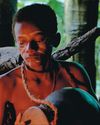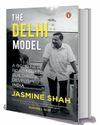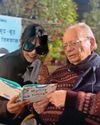
Wayanad was safe and serene for ages, with its hills and forests. To its east, stood the Nilgiris. To the northeast, the Mysore plateau. On the northwest, the Kodagu hills. On July 30, however, landlocked Wayanad was bobbing in a sea of grief as one of its hills came crashing down. The landslide obliterated several villages and took hundreds of human lives.
People all over Kerala whimpered why-even though they knew why. Life in Wayanad had been rooted in agriculture, and past generations had lived close to nature.
They worshipped trees, snakes, birds, animals, ancestors and the five elements. They were simple, unlettered people without bile or guile, who trusted everyone. Legal contracts were unknown until the British arrived and until clever settlers trickled in from beyond the hills.
Life changed slowly as 'civilisation' spread. 'Rational' men ran down rustic wisdom as superstition. Men of scientific temper scorned the land's sacred groves and dammed its rivers at the crest of the hills. As age-old beliefs trembled and loosened, so too did the invisible tree roots that bound the rocks deep inside the hills. Meandering streams lost their rhythm and went wayward.
Who can strengthen the binding roots and the rustic customs-if only to keep alive the flickering hope of averting recurring landslides? Wayanad was as right as rain in my childhood. Raindrops fell steadily but gently, not scaring anyone. An occasional torrential rain larded the earth. There was fleeting flooding during the monsoons, but no deluge.
When the streams overflowed, we swam in the biting cold water or made rafts out of banana stalks and punted around with a pole. The water drained in a day or two.
This story is from the September 15, 2024 edition of THE WEEK India.
Start your 7-day Magzter GOLD free trial to access thousands of curated premium stories, and 9,000+ magazines and newspapers.
Already a subscriber ? Sign In
This story is from the September 15, 2024 edition of THE WEEK India.
Start your 7-day Magzter GOLD free trial to access thousands of curated premium stories, and 9,000+ magazines and newspapers.
Already a subscriber? Sign In

Forging the future
As the curtain falls on 2024, I take pride in the extraordinary milestones achieved under the leadership of Prime Minister Narendra Modi. This year stands as a testament to the Modi government's resolve to forge a resilient and forward-looking Bharat. From groundbreaking advancements in infrastructure to visionary global initiatives, these efforts resonate deeply with the vision of Viksit Bharat.

Our strange democracy
Abraham Lincoln is lauded as among the very best presidents the US ever had: the statesman par excellence successfully steered the nation through the devastating and perilous years of the American civil war. Not only did Lincoln manage to keep his country united, he also ensured the passage of the 13th amendment to the US constitution, which abolished slavery.

Five years of post-pandemic fashion
It has been five years since we discovered what Covid-19 was, and five years since it disrupted the world forever. The World Health Organization activated their emergency systems on January 1, 2020, and informed the world by January 4, 2020. By the end of that week, they had set guidelines for various countries to follow. Comparable to the Spanish flu of 1918, more than 7 million people have died of Covid according to official data. Unofficially, no one has an idea. WHO has just this week asked China to provide critical data to understand the virus's origins as a “moral and scientific imperative”.

Community spirit
Rhythm of Dammam opens a window to the world of African-origin Siddis of Uttara Kannada

'Breaking' down a scandal
Society Girl is not just a case study of a high-profile death in Pakistan but also a stark commentary on media trials

Progress card
Jasmine Shah's book tells you what the AAP has achieved in Delhi in the last 10 years

SENSE IN NONSENSE
In his latest book of poetry, Ruskin Bond is at his funniest

Get ready for Trump bump
The ‘butterfly effect’ is a beautiful, mysterious metaphor of the planet’s interconnectedness.

QUIET FLOWS THE FAITH
The melding of an ancient amorphous faith and the latest science; of an antique tradition and new practices; ways of life older than memory and new expressions is happening at Prayagraj in Uttar Pradesh.

Trash to treasure
How a weed-choked Dal Lake spurred Maninder Singh's journey to become a waste management visionary